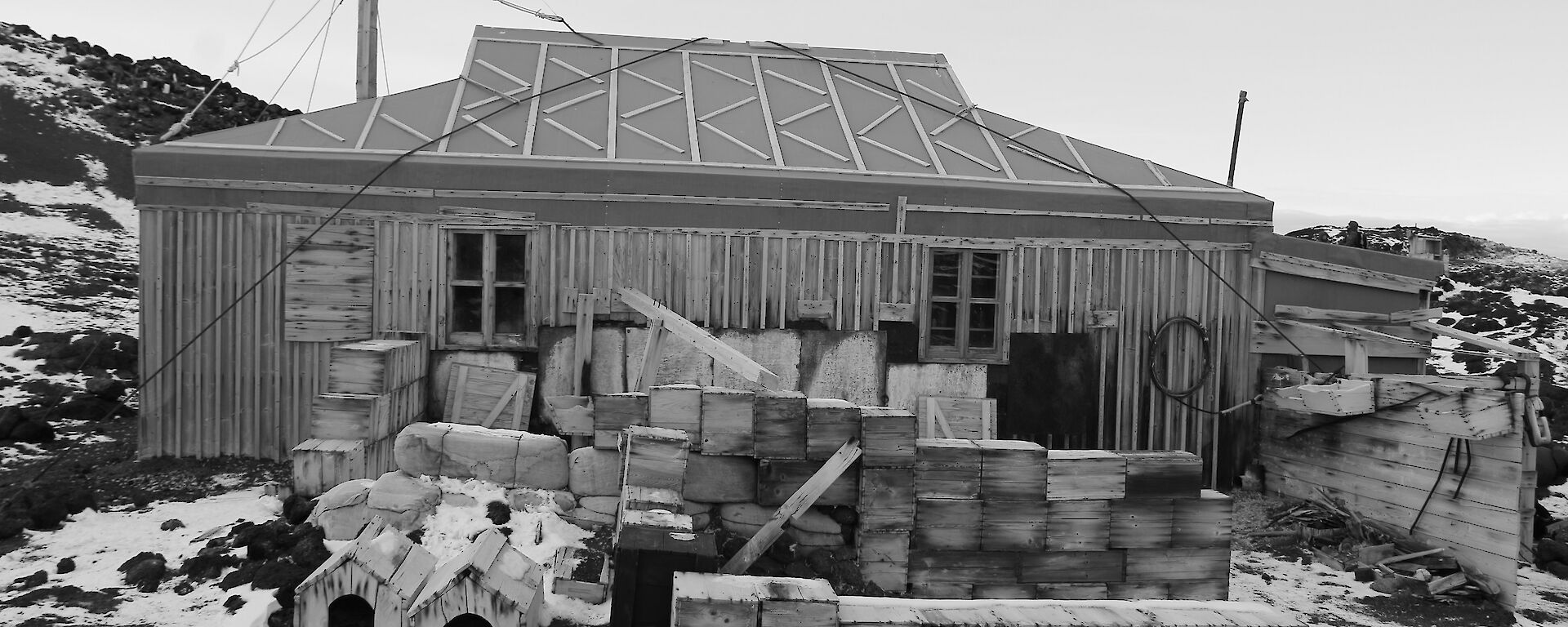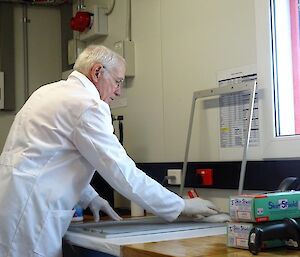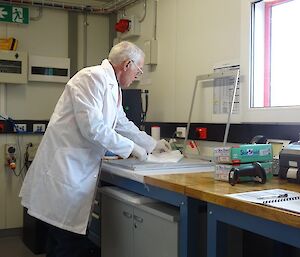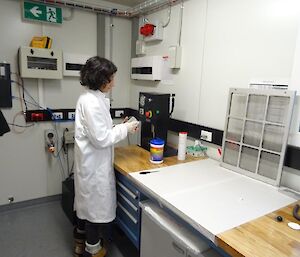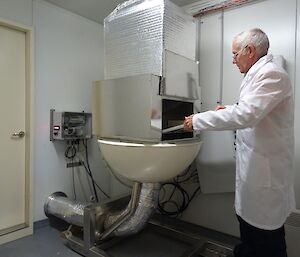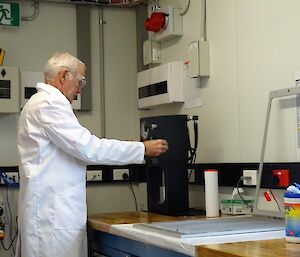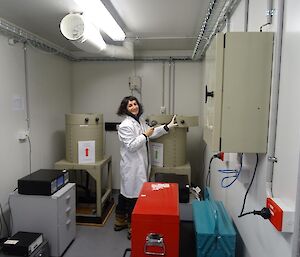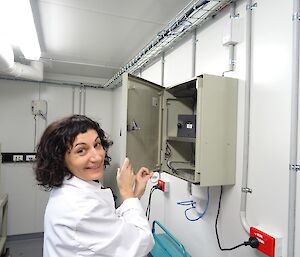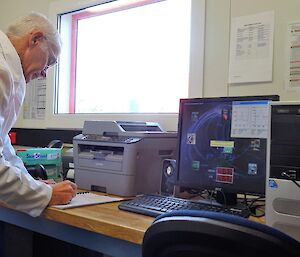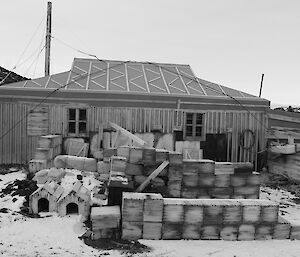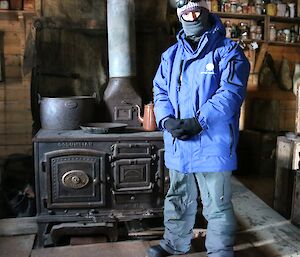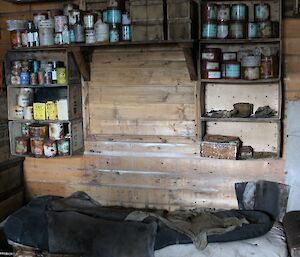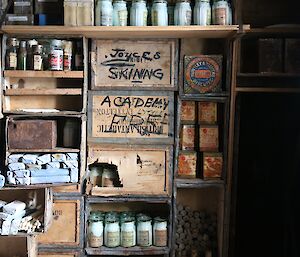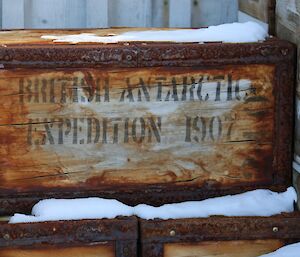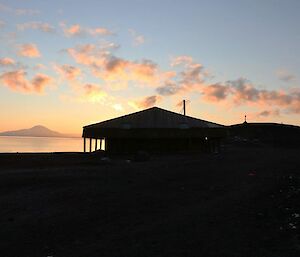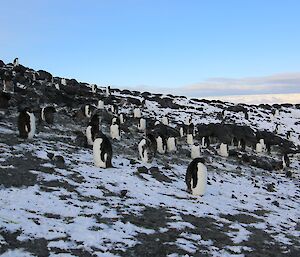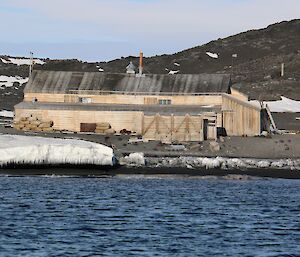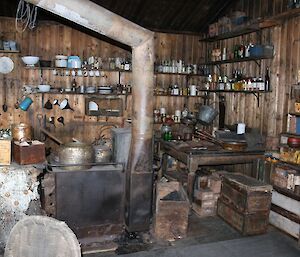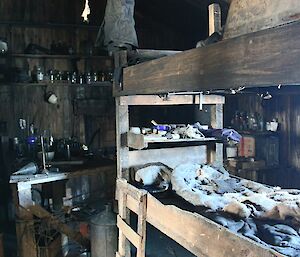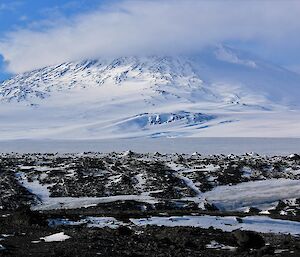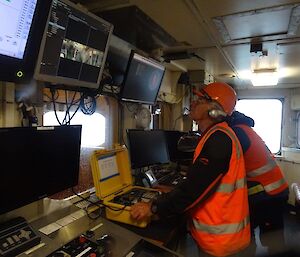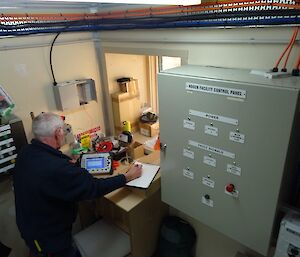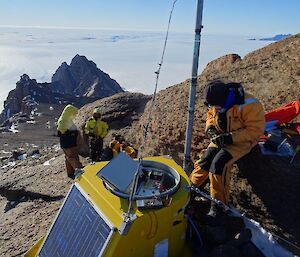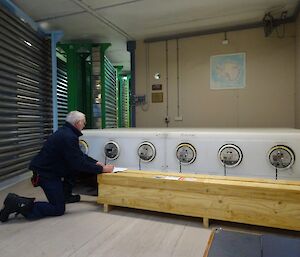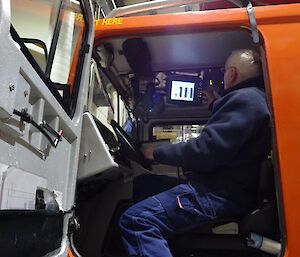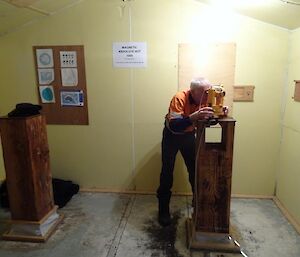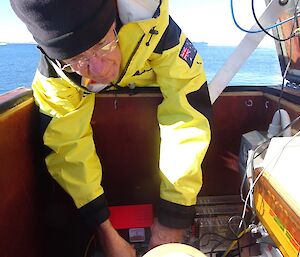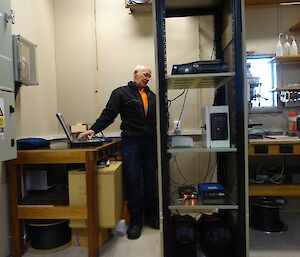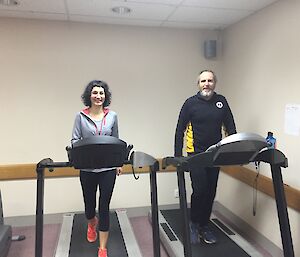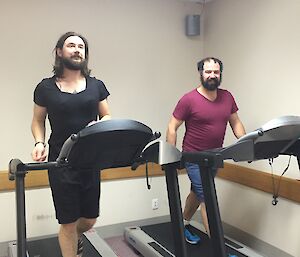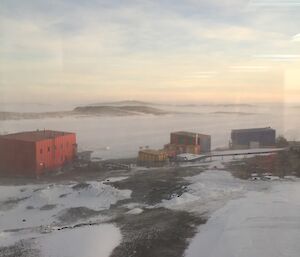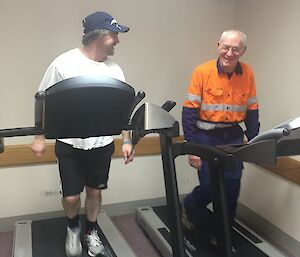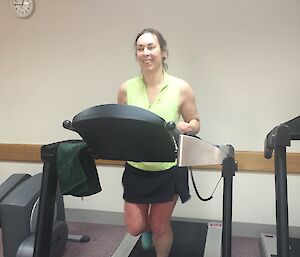This week I am writing about an important daily task that is undertaken on Mawson station everyday, in every weather condition we visit the ARPANSA building to conduct important scientific tests that have a far reaching impact.
ARPANSA (Australian Radiation Protection and Nuclear Safety Agency) is responsible for carrying out Australia’s radionuclide monitoring obligation to the Comprehensive Nuclear-Test-Ban Treaty Organisation (CTBTO).
At Mawson, we have a primary seismic station and radionuclide laboratory. In particular the radionuclide laboratory needs to be serviced every day and this is done by our station communication technical officer Doug or the station leader Kat. At 0900 hours each morning Kat or Doug will conduct the required tests on behalf of ARPANSA.
The test facility consists of a high volume air sampler which basically sucks in the outside air at around 1000mᶾ/hour, where particulate matter collects on a filter. This filter is changed every day, and the used filter (sample) is then processed. The sample is prepared by being removed from the filter casing, the filter material is then removed, then folded and inserted into a small 20 ton press for compacting. Once compacted it is then placed in a small plastic capsule for loading into the decay cabinet.
The decay process allows naturally occurring short lived nuclides to decay leaving only the long term which are of interest. The previous days sample is removed and loaded into the detector so that spectral analysis can be performed to identify any fission products which may be contained on the particulate matter. From the time the filter is placed in the air sampler to the time it is removed from the detector takes three days.
This all sounds pretty straight forward, but a strict process of steps needs to be followed. A computer system monitors environmental, security, power and filter management at all stages in the process and utilises a barcode system for tracking all samples taken. The computer system also logs, stores and sends the sampled data at regular intervals to the ARPANSA office in Australia and the parent organisation in Vienna.
Just one of the many important monitoring tasks we undertake to support remote science in Antarctica.
Until next time, Doug.

